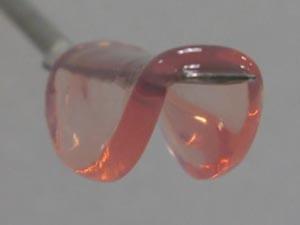Researchers design nutritious nano-clothing for stem cells to help cure baldness
Scientists in China and Canada have developed a way to treat hair loss using stem cells. The cells are enclosed within a cytokine-containing layer that circumvents the difficulties in regenerating new hair follicles on bald skin.

Hair loss, or alopecia, is a common problem caused by aging, diseases and medicines. Although not life-threatening, the emotional effects of hair loss can be damaging. Currently, treatments include drugs and hair transplants, however these are expensive and regenerating new hair follicles after treatment remains challenging. Dermal papilla cells, a type of mesenchymal stem cell located in hair follicles, are responsible for hair-follicle morphogenesis and hair cycling. Although potentially useful for treating alopecia, they suffer from loss of function in vitro.
A team lead by Zhi-Qi Hu from the Nanfang Hospital of Southern Medical University, China, and Malcolm Xing from the University of Manitoba, Canada, has designed what Xing describes as ‘nutritious nano-clothing’. This creates a protective microenvironment for dermal papilla cells, and at the same time provides the cells with a source of fibroblast growth factor-2, an essential cytokine culture nutrient that enhances proliferation and hair-inductive properties.
The team used layer-by-layer self-assembly deposition to encapsulate the cells within an inner layer of gelatin, a middle layer of alginate loaded with fibroblast growth factor-2, and an outer layer of gelatin. Tests on nude mice showed that the implanted encapsulated cells caused abundant hair growth with the hair follicle organisation showing mature characteristics. The coating improved the intrinsic therapeutic effect of the stem cells by preserving the native extracellular matrix that the cell produces, and sustaining release of the cytokine. Xing recalls that the most challenging aspect of this work was ‘optimising the concentrations of the coated polymers and manufacturing conditions to make the cells happy and healthy’.
Oommen Varghese, an expert in regenerative medicine from Uppsala University in Sweden says: ‘This is fascinating science that has enormous potential for clinical translational of stem cell based regenerative medicine. Such a coating could also protect cells from innate immunity, thereby improving the in vivo survivability. This is a major challenge in stem cell based translational research.’ Xing is currently trying to move the technology from the bench to the bedside.
References
This article is free to access until 02 February 2016
B Lin et al, J. Mater. Chem. B, 2016, DOI: 10.1039/c5tb02265g







No comments yet